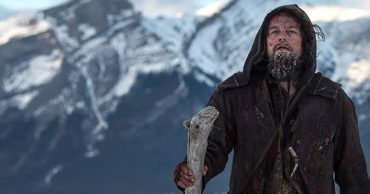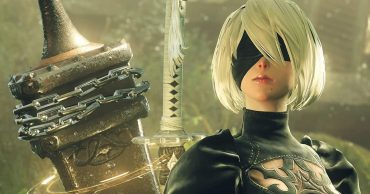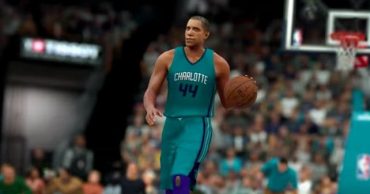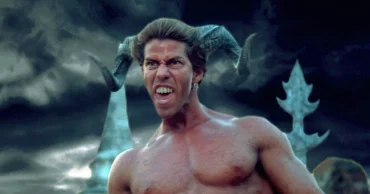
Wizards of the Coast is an excellent example of what one might call a big fish in a small pond. This is because it has been one of the biggest names in hobby gaming since the 1990s, as shown by the fact that it owns a number of properties that are very well-known within those circles. However, hobby gaming isn’t one of the bigger entertainment industries, meaning that Wizards of the Coast can claim a big slice of a not particularly big pie in spite of the fact that its sector has been seeing something of a resurgence in recent times. With that said, it would be a mistake to underestimate Wizards of the Coast’s influence because some of its properties have been very influential indeed. Here are 20 things that you may or may not have known about Wizards of the Coast:
1. Founded By Peter Adkison
In 1990, Peter Adkison founded Wizards of the Coast. However, the name had existed before that point in time, seeing as how he self-published a product in the 1980s that used what was called the Wizards of the Coast brand. Those who are curious should know that Adkison hasn’t been involved with running Wizards of the Coast for a very long time, though he remains active in the world of business as well as the world of hobby gaming.
2. The Name Comes from a Dungeons & Dragons Campaign
Perhaps unsurprisingly, the name of the corporation came from Adkison and his friends’ own hobby gaming. To be exact, the name came from a guild in which one of their player characters was a member in a Dungeons & Dragons campaign, thus making it a very suitable name to say the least.
3. First Product Was The Primal Order
In those earliest times, Wizards of the Coast existed as a publisher for tabletop RPGs. As such, it should come as no surprise to learn that its very first product was a book called The Primal Order, which wasn’t a true tabletop RPG in its own right but rather a supplement that could be used with a wide range of such systems. Content-wise, The Primal Order was focused on high-level gaming in general and gods in particular.
4. The Primal Order Got It Sued
As stated earlier, The Primal Order was meant to be compatible with a wide range of tabletop RPGs, thus making it useful for a wide range of tabletop RPG gamers. To facilitate this, the book included conversions for numerous tabletop RPGs, which included the most famous names of those times. For the most part, the people behind these tabletop RPGs were fine with said inclusions, but Palladium Books winded up suing because of the mention of its systems in the book. The eventual settlement resulted in a revised edition that excluded Palladium Books’s systems while making mention of others.
5. The Primal Order Never Received Its Intended Follow-Ups
Wizards of the Coast planned a number of follow-ups for The Primal Order. One example was a supplement that would have focused on the faiths centered on the gods created using said supplement, while another example was an adventure that would have used rules from said supplement. On top of this, there was a plan to release further books that would be similar in nature but focus on different topics such as the military, the economy, and the government. However, these plans never came to fruition because it wasn’t too long before Wizards of the Coast decided to focus its efforts elsewhere because of a man named Richard Garfield.
6. Doesn’t Own The Primal Order
Currently, Wizards of the Coast doesn’t actually own the rights to The Primal Order even though it was its first product. This is because when Adkison sold Wizards of the Coast to its current owner, one of the clauses in the contract was for him to retain ownership of the book.
7. Richard Garfield Caused Wizards of the Coast to Focus Elsewhere
Generally speaking, Richard Garfield is best-known for being a game designer. In 1991, he contacted Wizards of the Coast about a new board game called RoboRally. Unfortunately, while Wizards of the Coast saw promise in Garfield’s creation, its finances weren’t strong enough to support producing it. Instead, Adkinson asked Garfield to come up with something portable as well as fast-playing, thus resulting in the creation of Magic: the Gathering.
8. Saw the Birth of Magic: the Gathering
Magic: the Gathering is a trading card game (TCG). In fact, it was the first TCG ever created, meaning that its existence paved the way for other trading card games such as Yu-Gi-Oh! and the Pokemon TCG to exist. A lot of TCGs have come and gone since the initial release of Magic: the Gathering, but there are none that have managed to match its lasting popularity for the simple reason that new expansions are still being released on a regular basis. For proof, look no further than the fact that the latest expansion War of the Spark came out in May of 2019.
9. Had to License Magic: the Gathering for a Time
With that said, it is amusing to note that Wizards of the Coast actually had to license the rights to Magic: the Gathering for a time. Essentially, what happened was that Wizards of the Coast was being sued by Palladium Books at the time, which is why ownership of the TCG went to a corporation called Garfield Games that had been created for the purpose of shielding it. Eventually, once the lawsuit had been settled outside of the courtroom, the existence of Garfield Games became unnecessary, thus resulting in the ownership of the TCG going to Wizards of the Coast.
10. Saw Expansion Fueled by Magic: the Gathering
The success of Magic: the Gathering had a transformative effect on Wizards of the Coast. This could be seen in a sudden expansion in the size and scale of its operations. Moreover, this could be seen in the corporation’s new purchases as well as new releases. With that said, while Wizards of the Coast took a renewed interest in tabletop RPGs for a time, it soon pivoted away a second time because its efforts were unsuccessful.
11. Bought Out TSR
In 1997, Wizards of the Coast made what remains its best-known purchase, which would be that of the game publisher called TSR. Nowadays, TSR no longer exists, but its best-known product Dungeons & Dragons remains a very popular part of the hobby gaming landscape, as shown by the fact that it is now on its 5th Edition. As for how TSR came to be bought out by Wizards of the Coast, well, suffice to say that the corporation’s leadership released more products than what the market could support, with the result that it ran into a cash crunch at a very inopportune time.
12. Focused on Most Profitable Campaign Settings
Once Wizards of the Coast got its hands on Dungeons & Dragons, it made a choice to focus on the most profitable campaign settings, which were Greyhawk and Forgotten Realms. Due to this, a number of much beloved but not particularly profitable campaign settings stopped receiving new material, which was a real shame because some of them were very creative and thus very interesting in nature.
13. Created the Open Game License
It wasn’t too long before Wizards of the Coast started thinking about releasing a 3rd Edition for Dungeons & Dragons, not least because new editions tend to bring about a surge in sales. With that said, the release of 3rd Edition saw the creation of the Open Game License, which let interested parties use the tabletop RPG’s game mechanics for their own works. A wide range of products was made possible by the Open Game License, but the best-known should be the Pathfinder Roleplaying Game, which now commands a huge percentage of the market for fantasy tabletop RPGs in its own right.
14. Held a Contest that Resulted in Eberron
In 2002, Wizards of the Coast held the Fantasy Setting Search, which was meant to produce the next campaign setting for Dungeons & Dragons. This resulted in Keith Baker’s Eberron, which stood out in that it incorporated a lot of familiar elements from the franchise while giving the whole thing a very different feel as well as a very different tone. One excellent example of these stand-out characteristics can be seen in the fact that Eberron includes both trains and skyships, which are not particularly common in more traditional Dungeons & Dragons campaign settings.
15. Got Bought Out Because of Pokemon TCG
At various points in time, Wizards of the Coast has either owned or produced various properties of note that are now being handled by other companies. In particular, it is worth mentioning the Pokemon TCG, which was once published by Wizards of the Coast. Moreover, the Pokemon TCG proved to be so popular that it pushed Hasbro to make the choice to buy out the corporation, though it should be mentioned that it was already eyeing it for purchase beforehand because of the success of Magic: the Gathering.
16. Has a Subsidiary
Currently, Wizards of the Coast is a subsidiary. However, it is interesting to note that it has a subsidiary of its own, which is called Avalon Hill. For those who are curious, Avalon Hill specializes in wargames as well as strategic board games, meaning that it has a fair amount of compatibility with its parent company. Granted, Wizards of the Coast isn’t particularly well-known for either one of these two things, but they are very much integral parts of hobby gaming. In fact, it is well-known that Dungeons & Dragons came into existence because of an earlier creation called Chainmail, which was a wargame that made use of miniatures.
17. Used to Operate Its Own Stores
In 1999, Wizards of the Coast picked up a gaming store chain called The Game Keeper that was promptly renamed to Wizards of the Coast. Unfortunately, the 2000s were not exactly what anyone would call a good time for hobby gaming, which presumably played a part in the failure of said endeavor. By late 2003, the corporation had made a choice to close down the remaining gaming stores. Something that was carried out by early 2004.
18. Headquartered in Renton, WA
Initially, Wizards of the Coast was based just outside of Seattle, WA. Nowadays, it is headquartered in Renton, WA, which is one of Seattle’s suburbs. When the place was first settled, its economy was reliant on the extraction of natural resources. In modern times, Renton is home to a surprising number of companies that are involved in tech, manufacturing, and other sectors, with Wizards of the Coast being just one of the lot.
19. Renton Headquarters Has a Dragon Statue
The Renton headquarters is famous for having a statue of a Shivan Dragon that interested individuals can see as they head inside. Said creature comes from an iconic card from Magic: the Gathering, having picked up said status for a couple of reasons. For starters, it is a strong, tough creature with the ability to fly, thus making it a potent threat out on the field. However, what really makes it special is the special ability to boost its offensive power so long as the player has the resources to pay for it, meaning that it can be a game-ending threat when used in the right manner.
20. Publishes a Lot of Novels
Besides its games, Wizards of the Coast is known for publishing novels based on the settings of those games. To some extent, this is a continuation of TSR’s novel publishing practices. However, Wizards of the Coast was already releasing tie-in novels before it bought out TSR, seeing as how the first Magic: the Gathering novel came out in 1994.
 Follow Us
Follow Us





